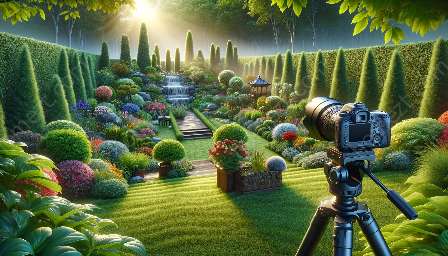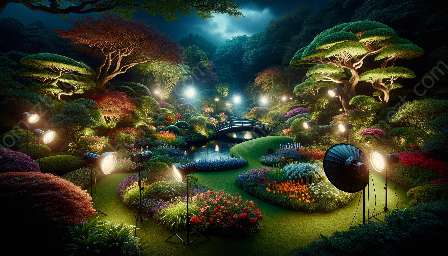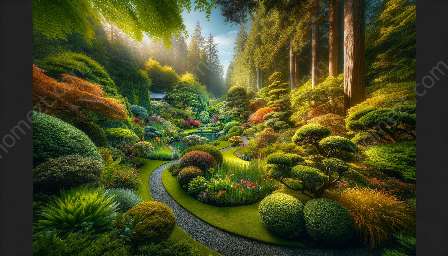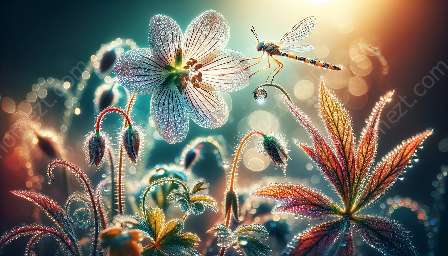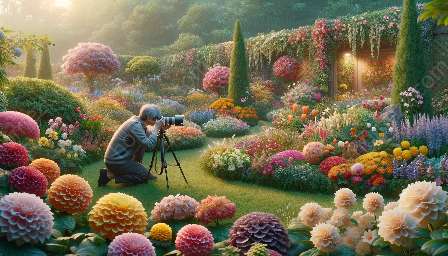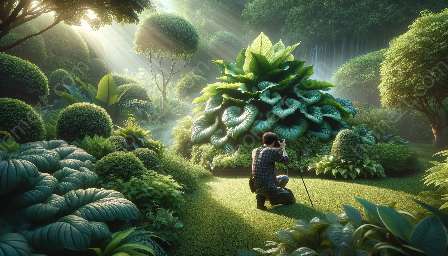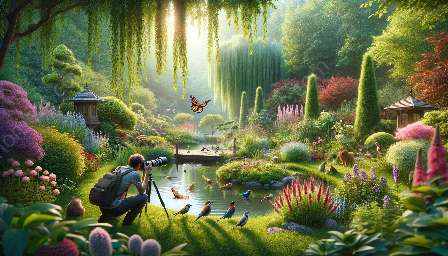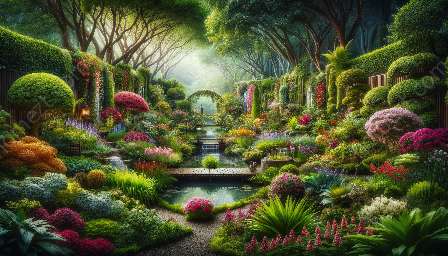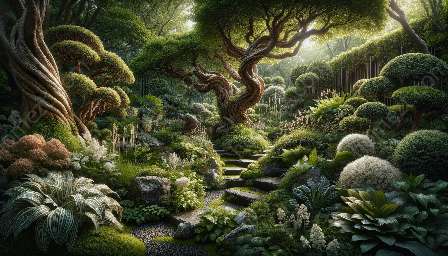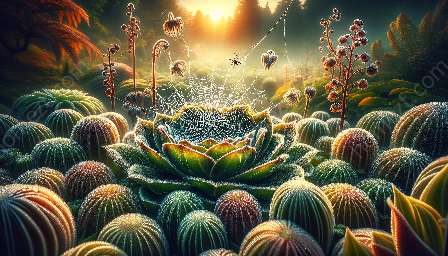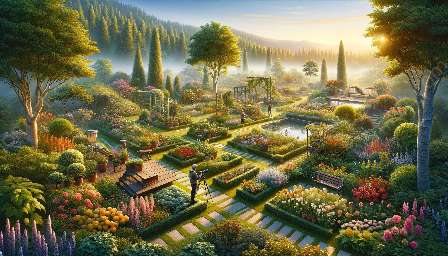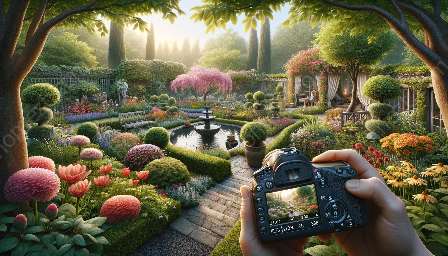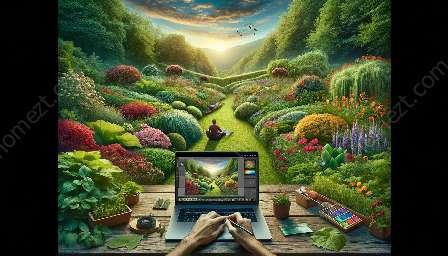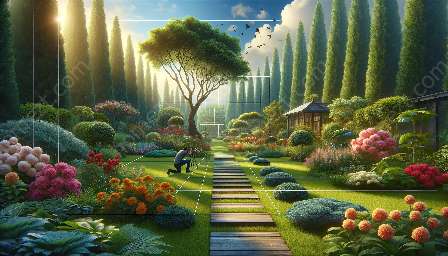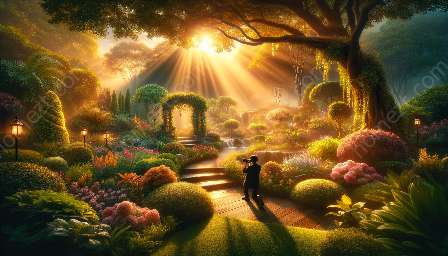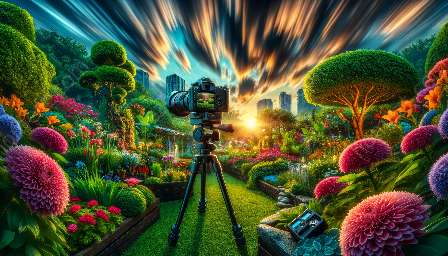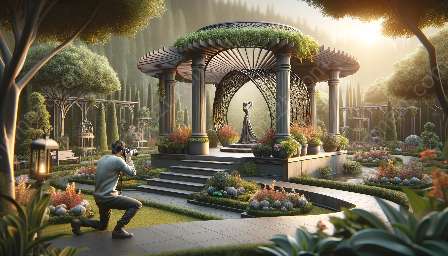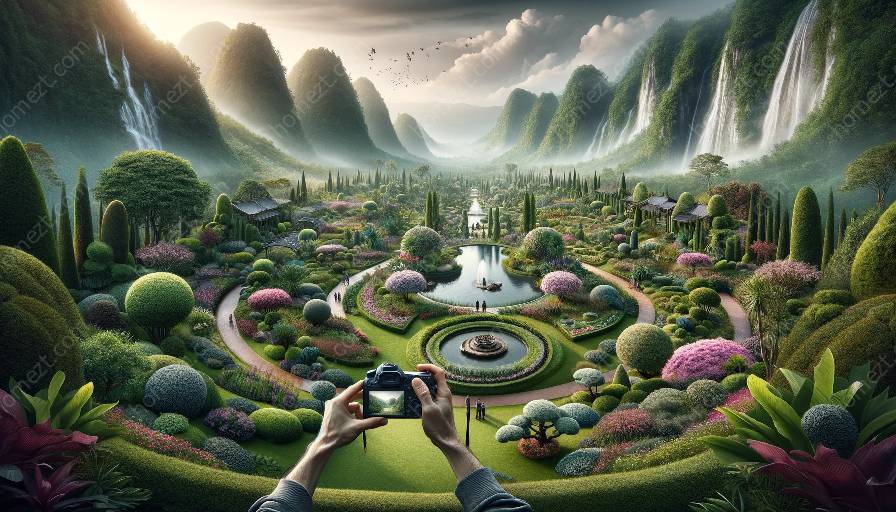When it comes to capturing the beauty of garden landscapes, there are several key factors to consider. From selecting the right time of day to understanding how to frame your shots, creating stunning images of garden scenes requires both artistic vision and technical know-how.
Garden Photography Essentials
Garden photography is a specialized form of landscape photography, with a focus on capturing the unique features and elements of garden spaces. To capture garden landscapes in an attractive and real way, it's essential to understand the principles of composition, lighting, and subject matter.
Composition Tips
When shooting garden landscapes, pay attention to the visual elements within the frame. Look for leading lines, patterns, and textures that can add interest to your photos. Consider framing your shots using natural elements such as arches, pathways, or overhanging branches to create depth and perspective.
It's also crucial to find a balance between the foreground, middle ground, and background to create a sense of depth in your images. Experiment with different angles and perspectives to find the most compelling compositions.
Lighting Considerations
The quality of light can make or break a garden photo. Early morning and late afternoon are often the best times for capturing garden landscapes as the light is softer and warmer, creating a more inviting atmosphere. Pay attention to the direction and intensity of the light, as well as the interplay of light and shadow within the garden.
Subject Matter and Details
When photographing garden landscapes, don't only focus on wide-angle shots. Look for intimate details such as flowers, plant textures, or unique architectural features that add character to the garden. Macro photography can be a great way to capture these details and convey the intricate beauty of the garden.
Gardening and Landscaping Techniques
Understanding gardening and landscaping principles can greatly enhance your ability to capture garden landscapes effectively. By cultivating a deeper appreciation for the elements and design of gardens, you can develop a more discerning eye as a photographer.
Plant Selection and Arrangement
Gardens are often designed around specific themes or plant palettes, so understanding the types of plants and their seasonal changes can help you anticipate the best times to photograph them. Look for harmonious color combinations and interesting foliage patterns to add visual intrigue to your photos.
Structural and Hardscape Elements
From pathways to pergolas, garden structures and hardscape elements provide focal points that can anchor your compositions. Consider how these elements interact with the surrounding plants and landscapes, and use them to guide the viewer's eye through the photo.
Seasonal Dynamics
One of the most exciting aspects of garden photography is the changing seasons. From the vibrant blooms of spring to the rich colors of fall, gardens undergo dynamic transformations throughout the year. Understanding the seasonal rhythms of the garden can help you plan your photo sessions to capture the most captivating moments.
Realistic and Attractive Garden Photography
Ultimately, the goal of capturing garden landscapes is to create images that are both realistic and attractive. This means finding a balance between representing the garden authentically while also infusing your photos with artistic flair.
Natural and Authentic Representation
Avoid over-editing or altering the natural characteristics of the garden in your photos. Aim to preserve the authenticity of the garden while enhancing its inherent beauty through your compositions and lighting choices.
Artistic Expression
At the same time, don't be afraid to inject your artistic vision into your garden photography. Experiment with different photography techniques such as long exposures, shallow depth of field, or creative angles to add a unique perspective to your images.
By mastering the technical aspects of garden photography and understanding the principles of gardening and landscaping, you can create compelling and authentic representations of garden landscapes that resonate with viewers.

